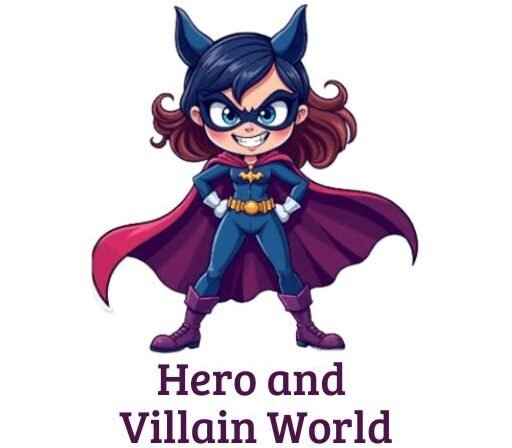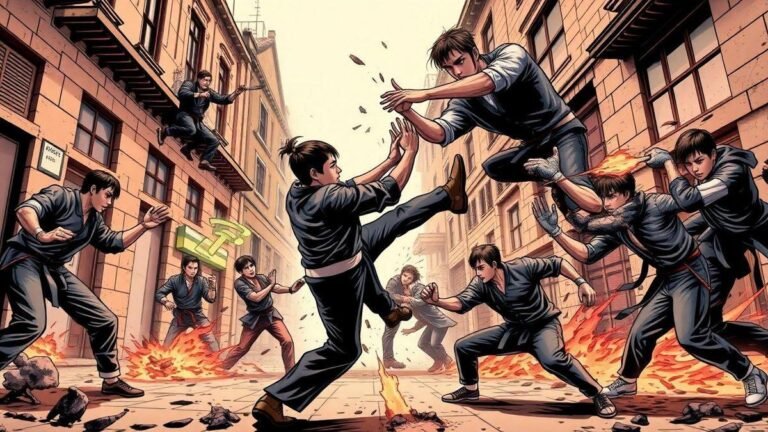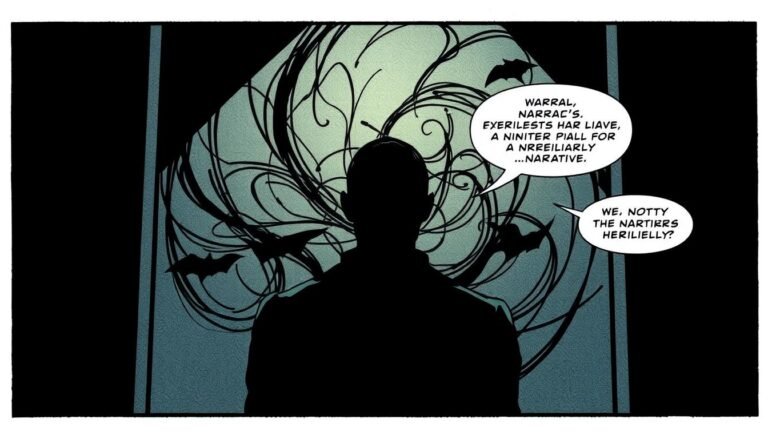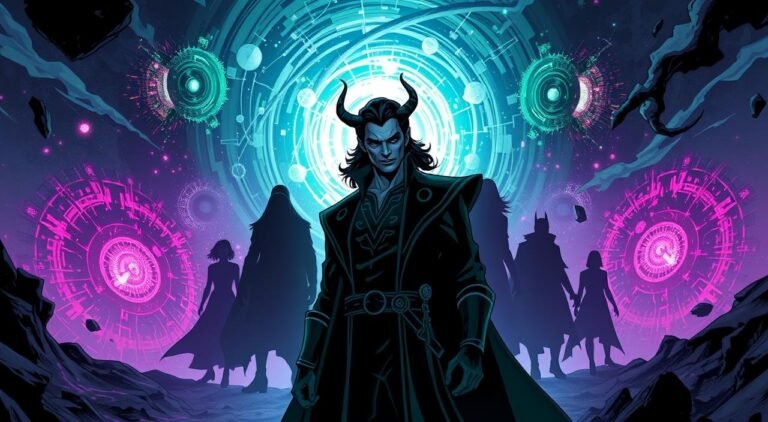Bam! Pow! Zap! The Art and Enduring Impact of Onomatopoeia in Comic Books
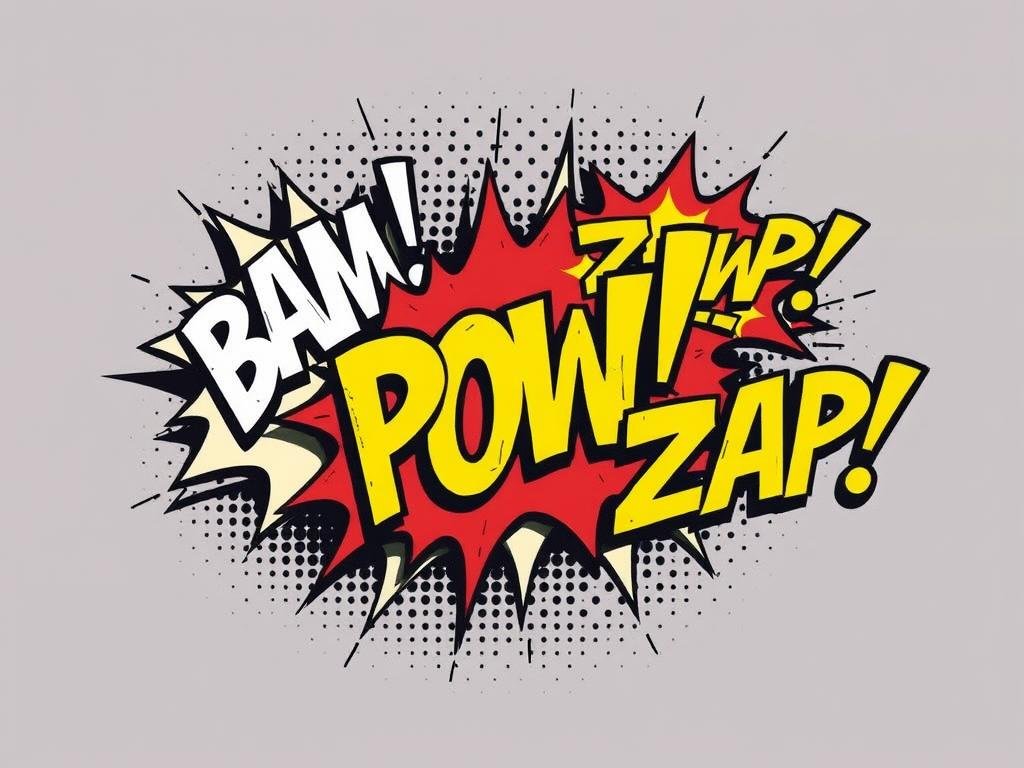
I remember the first time a comic book truly came alive for me. Those bold, explosive comic sound effects leaped off the page, transforming silent panels into a symphony of action and emotion. The onomatopoeia art wasn’t just text – it was a visceral experience that transported me directly into the heart of the story.
Comic book visuals have always been about more than just images. Those dynamic words like “CRASH!” and “BOOM!” are the secret language that bridges the gap between visual storytelling and sensory experience. They’re not just words – they’re sonic explosions that give comic books their pulse and energy.
From the earliest comic strips to today’s digital masterpieces, comic sound effects have evolved into an art form all their own. They capture moments of intense action, subtle emotion, and everything in between. Every “ZAP!” and “POW!” tells a story beyond the artwork, inviting readers to hear the narrative as much as see it.
These vibrant textual elements do more than decorate pages. They’re crucial storytelling tools that transform static images into immersive experiences. As we dive deeper into the world of comic book onomatopoeia, you’ll discover how these seemingly simple words create entire universes of sound and sensation.
The Evolution of Comic Sound Effects Through the Ages
Comic book history reveals a fascinating journey of sound effect evolution that has transformed how we experience visual storytelling. From humble beginnings to digital comics, sound effects have become an integral part of graphic narrative communication.
The early days of comics introduced readers to a unique visual language where text could represent sound. Artists discovered creative ways to bring action to life through innovative typography and graphic design.
Early Comic Strip Sound Effects
In the earliest comic strips, sound effects were simple and straightforward. Creators used basic onomatopoeias like:
- Boom!
- Crash!
- Bang!
Golden Age Innovation
During the Golden Age of comics, artists began experimenting with more dynamic sound representations. They developed intricate visual techniques that made sound effects integral to storytelling, not just supplemental elements.
Modern Digital Comics Integration
Digital comics have revolutionized sound effect design. Interactive platforms now allow for animated and responsive sound experiences that were impossible in traditional print media. Creators can now design sound effects that truly leap off the screen, engaging readers in unprecedented ways.
The evolution of comic sound effects continues to push the boundaries of visual storytelling, creating immersive experiences that capture readers’ imaginations.
Understanding Comic Sound Effects Onomatopoeia Art
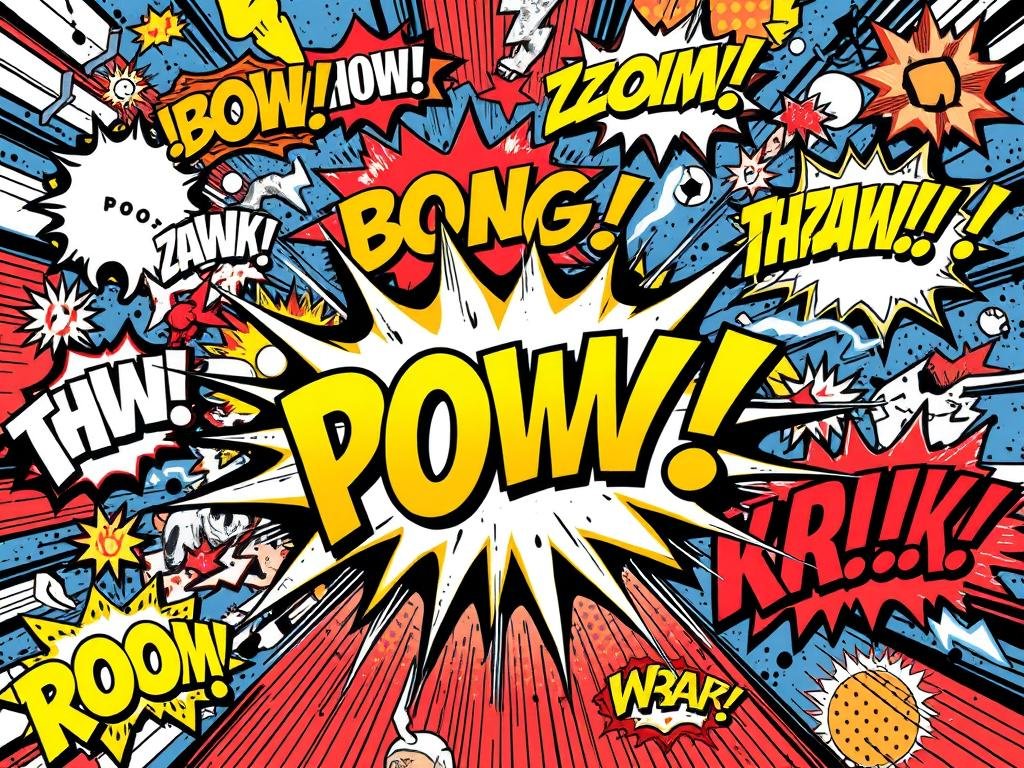
Comic book sound effects transform silent pages into dynamic audiovisual experiences. Visual sound representation is an intricate art form that breathes life into graphic narratives. Artists use sophisticated comic art techniques to translate auditory sensations into visual language.
Onomatopoeia examples are the heartbeat of comic storytelling. These graphic sound representations go beyond simple words like “boom” or “crash”. They become integral visual elements that communicate intensity, emotion, and narrative momentum.
- Typography plays a crucial role in sound effect design
- Color and shape enhance the auditory experience
- Placement within panel layouts creates dramatic impact
Different artists develop unique styles for rendering sound. Jack Kirby, for instance, pioneered explosive, energetic sound effect designs that became legendary in comic book history. Modern creators continue to push boundaries, experimenting with digital tools and innovative graphic approaches.
“Sound effects are the invisible soundtrack of comic book storytelling” – Comic Art Experts
Comic book sound effects transform reading from a visual to a multisensory experience. They bridge the gap between static imagery and dynamic action, allowing readers to “hear” the story unfolding before their eyes.
The Psychology Behind Visual Sound in Comics
Comic book sound effects are far more than simple visual noise. They represent a sophisticated psychological bridge between readers and visual, creating an immersive experience that transcends traditional narrative techniques.
Understanding comic reader psychology reveals how sound effects transform the reading experience. These dynamic visual representations engage readers on multiple sensory levels, turning a static page into a vibrant, interactive environment.
Reader Engagement and Immersion
Sound effects create an intricate connection between the reader’s imagination and the comic’s visual world. They help bridge the gap between what is seen and what is heard, allowing readers to experience the narrative more intensely.
- Amplify emotional resonance of scenes
- Create dynamic visual rhythm
- Enhance narrative tension
Emotional Impact of Sound Effects
The cultural impact of comics is deeply rooted in how sound effects manipulate reader emotions. A thunderous “BOOM!” can instantly communicate danger, while a soft “whisper” can convey intimate moments of vulnerability.
Cultural Interpretations
Different cultures interpret visual sound effects uniquely. What might represent aggression in one cultural context could signify something entirely different in another, showcasing the nuanced language of comic book communication.
Sound effects are the heartbeat of visual storytelling, transforming silent pages into living, breathing narratives.
Typography and Design in Comic Book Sound Effects
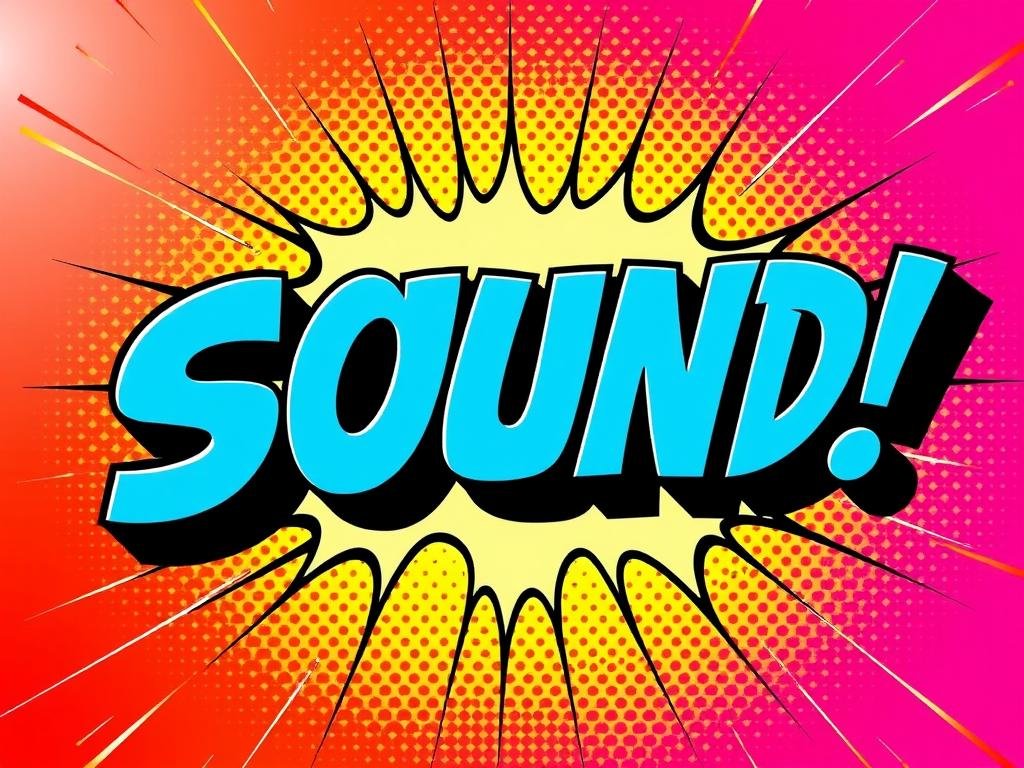
Comic book typography transforms simple letters into powerful visual communication. The art of sound effect design goes far beyond standard text, creating dynamic expressions that leap off the page. In my exploration of comic book typography, I’ve discovered how strategic font choices can dramatically amplify a character’s experience.
Sound effect design involves several critical elements:
- Font selection that matches the emotional intensity of the scene
- Custom lettering techniques that create unique visual energy
- Size and weight manipulation to suggest volume and impact
- Color integration that enhances the sound’s perceived volume
Digital tools have revolutionized comic book typography, allowing artists unprecedented creative freedom. Designers now craft intricate sound effects that blend seamlessly with artwork, turning words into visual experiences that resonate with readers.
The psychology behind sound effect design is fascinating. Visual communication through typography can make readers feel the boom of an explosion or the whisper of a secret conversation.
Each carefully constructed letter becomes a narrative element, transforming text from mere information to an immersive storytelling device.
Professional comic book artists understand that typography is not just about legibility—it’s about creating an emotional connection. The right design can make readers hear sounds that exist only in their imagination.
Famous Onomatopoeia Across Different Comic Universes
Comic book sound effects are more than just visual representations of noise – they’re an art form that brings action to life. Each comic universe has developed its own unique sonic signature, transforming simple words into powerful storytelling tools.
Sound effects in Marvel comics, DC comics, and indie comics have evolved dramatically, creating memorable auditory experiences that resonate with readers. Let’s explore the signature sounds that define these different comic universes.
Marvel’s Signature Sounds
Marvel comics have crafted some of the most iconic sound effects in comic book history. The SNIKT! of Wolverine’s adamantium claws and the THWIP! of Spider-Man’s web-shooters are instantly recognizable to fans worldwide.
- Wolverine’s SNIKT! – Sharp and aggressive
- Spider-Man’s THWIP! – Light and precise
- Hulk’s SMASH! – Thunderous and powerful
DC Comics’ Audio Visual Language
DC comics pioneered many classic sound effects, particularly during the campy 1960s Batman era. The POW! and BIFF! sounds became cultural touchstones that defined superhero action for generations.
- Batman’s BAM! – Sharp and punchy
- Superman’s KRAKOOM! – Explosive and intense
- Wonder Woman’s WHACK! – Precise and decisive
Independent Comics’ Creative Approaches
Indie comics have pushed the boundaries of signature sound effects, experimenting with typography and design to create unique auditory experiences. These comics often use more abstract and unconventional sound representations.
- Experimental typography
- Unconventional sound design
- Innovative visual representations
From the classic BANG! to more nuanced sonic representations, comic book sound effects continue to evolve, capturing the imagination of readers across different universes.
The Impact of Batman ’66 on Pop Culture Sound Effects
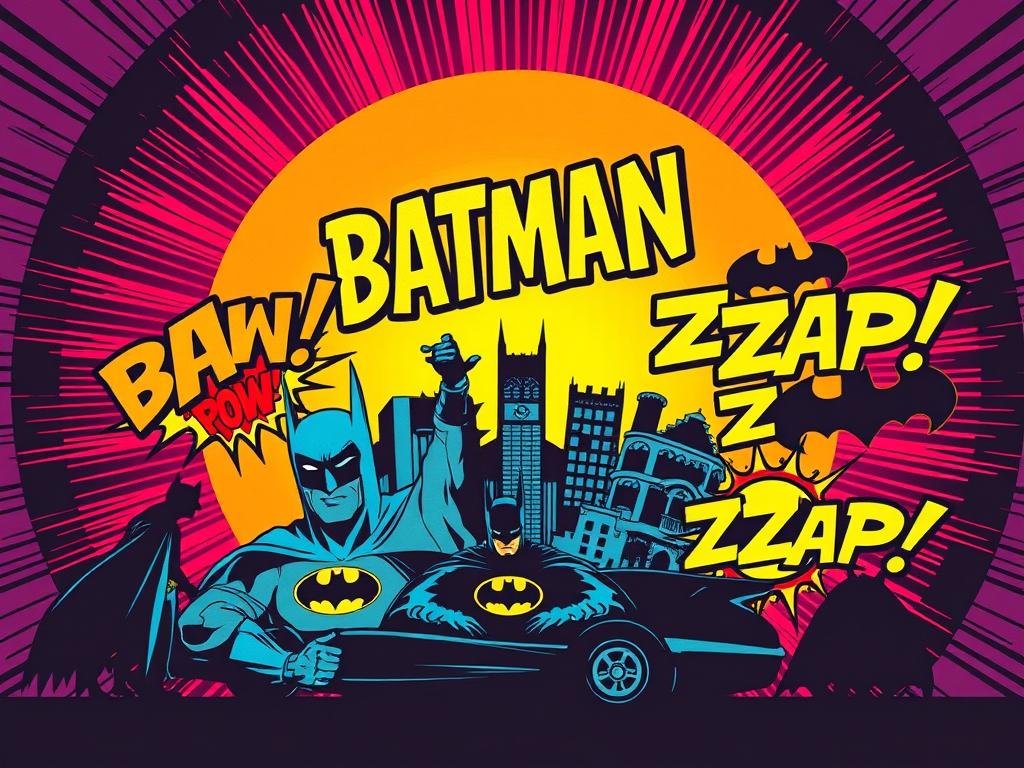
The Batman TV show of the 1960s revolutionized how comic book adaptations were perceived by mainstream audiences. With its iconic BAM! POW! ZAP! visual sound effects, the show transformed comic book storytelling into a vibrant, playful cultural phenomenon.
Adam West’s portrayal of Batman introduced a unique visual language that transcended traditional comic book narratives. The exaggerated sound effects became a cultural shorthand for comic book action, instantly recognizable across generations.
- Created a lasting pop culture influence
- Popularized visual sound effects beyond comic books
- Brought comic book aesthetics into mainstream media
The show’s impact extended far beyond entertainment. It shaped public perception of comic book adaptations, turning what was once considered niche entertainment into a widespread cultural experience.
| Cultural Impact | Audience Perception |
|---|---|
| Mainstream Recognition | Playful and Accessible |
| Visual Sound Effects | Iconic and Memorable |
| Comic Book Representation | Transformed Public Image |
While some critics argue the show simplified comic book narratives, it undeniably brought comic book storytelling into living rooms across America, creating a lasting legacy that continues to influence pop culture today.
Digital Age Transformation of Comic Book Sounds
The world of digital comics has undergone a radical transformation, revolutionizing how sound effects are created and experienced. As an artist and comic enthusiast, I’ve witnessed the incredible evolution of sound design in the digital realm.
Modern sound effect software has opened up unprecedented creative possibilities for digital comics creators. Artists now have powerful tools that allow them to craft intricate and dynamic audio-visual experiences that were impossible just a decade ago.
Modern Software and Sound Design
Digital comics now leverage cutting-edge sound effect software to enhance reader engagement. These innovative tools provide creators with multiple capabilities:
- Interactive sound layering
- Customizable audio effects
- Real-time sound generation
- Advanced audio visualization techniques
Animation Adaptation Challenges
Transforming comic book sound effects into animated formats presents unique challenges. The transition from static visual sounds to dynamic audio requires careful consideration of:
- Maintaining the original artistic intent
- Translating visual onomatopoeia into authentic sounds
- Preserving the emotional impact of original sound designs
“Sound is 50% of the moviegoing experience,” noted legendary sound designer Walter Murch, a principle equally applicable to digital comics and animation.
The intersection of digital comics, sound effect software, and animation adaptation continues to push creative boundaries, offering readers increasingly immersive storytelling experiences.
International Perspectives on Comic Sound Effects
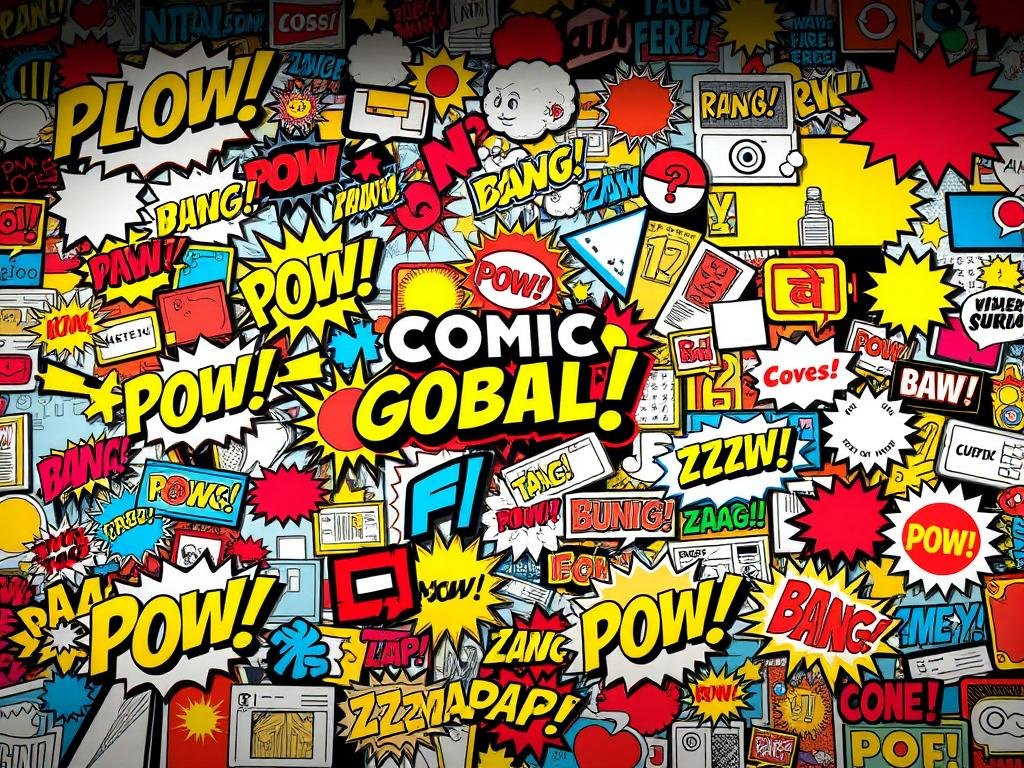
Comic books represent a vibrant global language of visual storytelling, with manga sound effects and European comics showcasing unique approaches to onomatopoeia. As a comic enthusiast, I’ve discovered fascinating variations in how different cultures express sound through graphic art.
Manga sound effects stand out as particularly distinctive. Japanese comics use intricate, stylized onomatopoeia that often convey subtle emotional nuances. These unique sound representations frequently remain untranslated, preserving the original artistic intent.
- Japanese manga uses complex sound effect symbols
- European comics approach onomatopoeia differently from American traditions
- Global comic traditions blend visual and auditory experiences
European comics demonstrate another fascinating approach to sound effects. Their graphic style often integrates sound more subtly, creating a more nuanced auditory experience compared to the bold, explosive sounds typical in American superhero comics.
| Comic Tradition | Sound Effect Characteristic | Unique Feature |
|---|---|---|
| Japanese Manga | Intricate, emotional symbols | Untranslated original characters |
| European Comics | Subtle, integrated sounds | Minimalist graphic approach |
| American Comics | Bold, explosive sounds | High-energy visual representation |
Globalization has sparked remarkable cross-cultural exchanges in comic book sound design. Artists now draw inspiration from global comic traditions, creating a rich, diverse landscape of visual sound that transcends geographical boundaries.
The Role of Sound Effects in Storytelling
Sound effects are the unsung heroes of comic book narrative, transforming visual storytelling techniques into immersive experiences that leap off the page. These powerful graphic elements do far more than simply decorate panels – they breathe life into action sequences and create emotional resonance.
In the world of visual storytelling, sound effects serve multiple critical functions:
- Amplify narrative tension
- Guide reader perception
- Create sensory depth
- Communicate character experiences
Narrative Enhancement
Comic book creators use onomatopoeia strategically to enhance storytelling. A well-placed CRASH or WHOOSH can instantly communicate complex emotional and physical experiences that dialogue alone cannot capture.
Action Scene Dynamics
During intense action sequences, sound effects become essential visual storytelling techniques. They transform static images into dynamic, kinetic experiences. The size, style, and placement of sound effects can dramatically alter how readers perceive movement and intensity.
Sound effects are the heartbeat of comic book storytelling, turning silent pages into vibrant, immersive worlds.
By understanding and mastering these graphic elements, comic artists create powerful narratives that resonate deeply with readers, making every panel a multisensory experience.
Artist Techniques for Creating Impactful Sound Effects
Crafting powerful sound effects is an art form that requires careful consideration of comic art techniques. Artists approach sound effect creation as a dynamic visual language that breathes life into static panels. The goal is to transform simple letters into explosive visual experiences that leap off the page.
When developing sound effects, artists focus on several key comic art techniques:
- Typography selection that matches the sound’s intensity
- Color choices that amplify emotional impact
- Size and placement to direct reader attention
- Integrated design with surrounding artwork
Visual impact becomes crucial in sound effect design. Professional comic artists use unique strategies to make sounds feel tangible and immersive. They experiment with:
- Distorted letter shapes
- Dynamic angle variations
- Gradient color implementations
- Texture overlays
Sound effect creation isn’t just about making noise visible—it’s about storytelling. Each BOOM, CRASH, or ZAPP communicates more than audio. They represent character emotions, action intensity, and narrative rhythm.
| Technique | Purpose | Visual Strategy |
|---|---|---|
| Dimensional Typography | Create depth | 3D letter effects |
| Color Psychology | Emotional resonance | Warm/cool color selection |
| Spatial Dynamics | Action emphasis | Directional letter placement |
Mastering these techniques transforms sound effects from simple text into powerful visual storytelling elements that captivate readers and enhance narrative experiences.
The Future of Comic Book Onomatopoeia
The landscape of comics is rapidly transforming with digital innovation pushing the boundaries of storytelling. As a passionate observer of the future of comics, I’m excited to explore how technology will reshape the way we experience sound effects and narrative immersion.
Digital technology is revolutionizing comic book experiences, creating unprecedented opportunities for mixed reality comics. Readers can now anticipate more interactive and dynamic sound experiences that transcend traditional page limitations.
Digital Innovation Transforming Sound Effects
Emerging technologies are introducing groundbreaking ways to experience comic book sound effects:
- Augmented reality integration
- Interactive digital platforms
- Personalized sound design
- Adaptive audio experiences
Mixed Reality Comic Experiences
Mixed reality comics are poised to create immersive environments where sound effects become multisensory experiences. Readers might soon interact directly with onomatopoeia, transforming passive reading into an engaging multimedia journey.
| Technology | Comic Experience Impact |
|---|---|
| Augmented Reality | 3D Interactive Sound Effects |
| AI Sound Generation | Customizable Audio Narratives |
| Haptic Feedback | Physical Sound Sensation |
The future of comics is not just about visual storytelling but creating immersive sensory experiences that blur the lines between traditional reading and interactive entertainment.
Conclusion
Comic book sound effects represent far more than simple visual noise. They are a sophisticated artistic language that bridges the gap between visual storytelling and auditory experience. The comic sound effects impact has transformed how readers perceive and interact with graphic narratives, creating immersive worlds that leap off the page.
Onomatopoeia art appreciation goes beyond mere decoration. These dynamic visual representations capture emotions, intensity, and energy in ways traditional text cannot.
From the iconic “Bam!” of Batman’s punches to the subtle whispers of character interactions, sound effects have become an integral part of comic book culture, speaking to readers across generations and genres.
As technology continues to evolve, so will the art of comic book sound effects. Digital platforms, mixed reality, and innovative design techniques promise exciting new frontiers for this unique form of visual communication.
Readers and artists alike can look forward to increasingly creative and immersive ways of experiencing sound through the graphic storytelling medium.
My journey exploring these vibrant visual sounds has reinforced their crucial role in comic narratives. I invite readers to approach their next comic book with fresh eyes, appreciating the intricate artistry behind each carefully crafted “Pow!”, “Zap!”, and whispered “shhh” that brings stories to life.
FAQ
Q: What exactly is onomatopoeia in comic books?
A: Onomatopoeia in comics are visual representations of sounds that use words to mimic the actual sound an action or object makes. These are typically stylized words like “BOOM”, “CRASH”, or “SNIKT” that help readers experience the auditory dimension of a comic book scene.
Q: Why are sound effects so important in comics?
A: Sound effects are crucial because they enhance storytelling by adding sensory depth to visual narratives. They help guide the reader’s eye, create emotional impact, emphasize action sequences, and provide a more immersive reading experience.
Q: How do different cultures use sound effects in comics?
A: Comic sound effects vary significantly across cultures. For instance, Japanese manga often uses unique, untranslated sound effects, while Western comics might approach onomatopoeia differently. Each culture brings its own linguistic and artistic interpretation to sound representation.
Q: Can sound effects be considered an art form?
A: Absolutely! Sound effects are a sophisticated artistic technique involving typography, color, design, and strategic placement. Professional comic artists spend considerable time crafting sound effects that not only communicate sound but also complement the overall visual storytelling.
Q: How have digital technologies impacted comic sound effects?
A: Digital technologies have revolutionized sound effect creation, offering artists advanced design tools, possibilities for animated or interactive effects, and more complex typographical manipulations that were impossible in traditional print comics.
Q: Are sound effects only used in action scenes?
A: No, sound effects are versatile and can be used in various narrative contexts. While they’re prominent in action sequences, they can also convey subtle atmospheric sounds, emotional states, or provide rhythmic narrative pacing in quieter, more contemplative scenes.
Q: What are some of the most iconic comic book sound effects?
A: Some legendary sound effects include Marvel’s “SNIKT” (Wolverine’s claws), “THWIP” (Spider-Man’s web-shooters), and DC’s “KRAKOOM” (Superman’s powerful punches). The 1960s Batman TV show’s “BAM! POW! ZAP!” also became deeply embedded in pop culture.
Q: How do artists choose sound effect designs?
A: Artists consider multiple factors when designing sound effects, including typography, color, size, and panel composition. The design must complement the artwork, convey the intended sound’s intensity, and guide the reader’s visual experience.
Q: Are comic sound effects universal or language-specific?
A: While some sound effects have become somewhat universal (like “BOOM”), many are language and culture-specific. Different languages interpret sounds differently, leading to unique onomatopoeic expressions in comics worldwide.
Q: What’s the future of comic book sound effects?
A: The future looks exciting with potential innovations like augmented reality, interactive digital comics, customizable sound effects, and advanced printing technologies that could create more immersive and dynamic sound representations.
